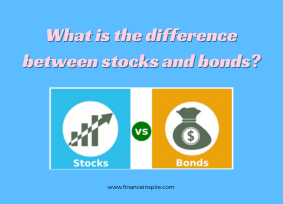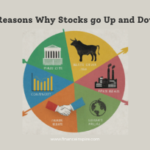What is the difference between stocks and bonds? Discover the key distinctions between these two investment vehicles, including ownership, risk, returns, and more, to make informed decisions for your financial portfolio
What is the difference between stocks and bonds? – What are Stocks?
What is the difference between stocks and bonds? Stocks, also known as equities, represent ownership shares in a publicly-traded company. When you buy stocks, you become a shareholder and part-owner of the company. As the company grows and generates profits, a portion of those profits may be distributed to shareholders in the form of dividend payments.
Additionally, the value of your stock shares may appreciate over time as the company’s performance and growth prospects improve. This allows investors to benefit from capital gains by selling stocks at a higher price than what they originally paid.
Some key characteristics of stocks include:
– Risk and Potential Reward: Stocks are generally considered higher-risk investments compared to bonds, but they also offer higher potential returns over the long term.
– Voting Rights: As a shareholder, you typically have voting rights that allow you to weigh in on important corporate decisions like electing board members or approving major business transactions.
– Unlimited Upside Potential: There is technically no limit to how high a stock’s price can rise, providing the opportunity for substantial capital gains if the company performs exceptionally well.
– Risk of Total Loss: However, it’s also possible for a stock’s value to plummet to zero if the company goes bankrupt or faces significant financial distress.
What is the difference between stocks and bonds? – What are Bonds?
Bonds, on the other hand, represent debt instruments issued by governments, municipalities, corporations, or other entities to raise capital. When you buy a bond, you are essentially lending money to the bond issuer, who agrees to pay you periodic interest payments (known as coupon payments) over the life of the bond. At the bond’s maturity date, the issuer also repays the original principal amount you invested.
Key characteristics of bonds include:
– Fixed Income Stream: Unlike stocks, bonds provide a predictable income stream through regular interest payments until maturity.
– Lower Risk, Lower Potential Returns: Bonds are generally considered lower-risk investments compared to stocks, but they also tend to offer lower potential returns over the long run.
– Defined Maturity Date: Bonds have a set maturity date when the principal amount must be repaid, providing investors with a clear timeline for their investment.
– Credit Risk: The risk of default exists if the bond issuer faces financial difficulties and is unable to make interest or principal payments.
– Interest Rate Risk: The value of existing bonds can fluctuate based on changes in prevailing interest rates.
What is the difference between stocks and bonds? – Differences in Ownership, Income, and Risk
The primary difference between stocks and bonds lies in the nature of ownership and income generation.
With stocks, investors become part-owners of the company and can benefit from its growth, profitability, and potential capital appreciation. However, stock investments are inherently riskier, as share prices can fluctuate significantly, and there is no guaranteed income stream.
Bonds, on the other hand, represent debt obligations where investors lend money to the issuer in exchange for regular interest payments and the eventual repayment of principal. This provides a more predictable income stream, but the potential for capital appreciation is generally lower than with stocks.
Additionally, stocks typically carry higher risk due to the potential for company failure, market volatility, and the possibility of losing your entire investment. Bonds are generally considered lower-risk investments, but they are not without risks, such as credit risk (the risk of default by the issuer) and interest rate risk (changes in interest rates can affect bond prices).
What is the difference between stocks and bonds? – Diversification and Portfolio Construction
Given the different risk-return profiles of stocks and bonds, many investors choose to hold a combination of both asset classes in their portfolios. This approach, known as diversification, can help balance risk and potential returns while aligning with an investor’s specific financial goals and risk tolerance.
Generally, investors with a longer investment horizon and higher risk tolerance may allocate a larger portion of their portfolios to stocks, which have the potential for higher long-term growth. Conversely, investors with a shorter time horizon or lower risk tolerance may hold a higher allocation to bonds to prioritize capital preservation and income generation.
It’s important to periodically review and rebalance your portfolio to maintain your desired asset allocation as market conditions and your financial goals evolve over time.
In conclusion, understanding the fundamental differences between stocks and bonds is essential for making informed investment decisions. Stocks offer the potential for higher returns and capital appreciation but with higher risk, while bonds provide a more predictable income stream and lower risk but with generally lower potential returns. By combining both asset classes in a well-diversified portfolio, investors can seek to balance risk and return based on their individual financial objectives and risk tolerance.










